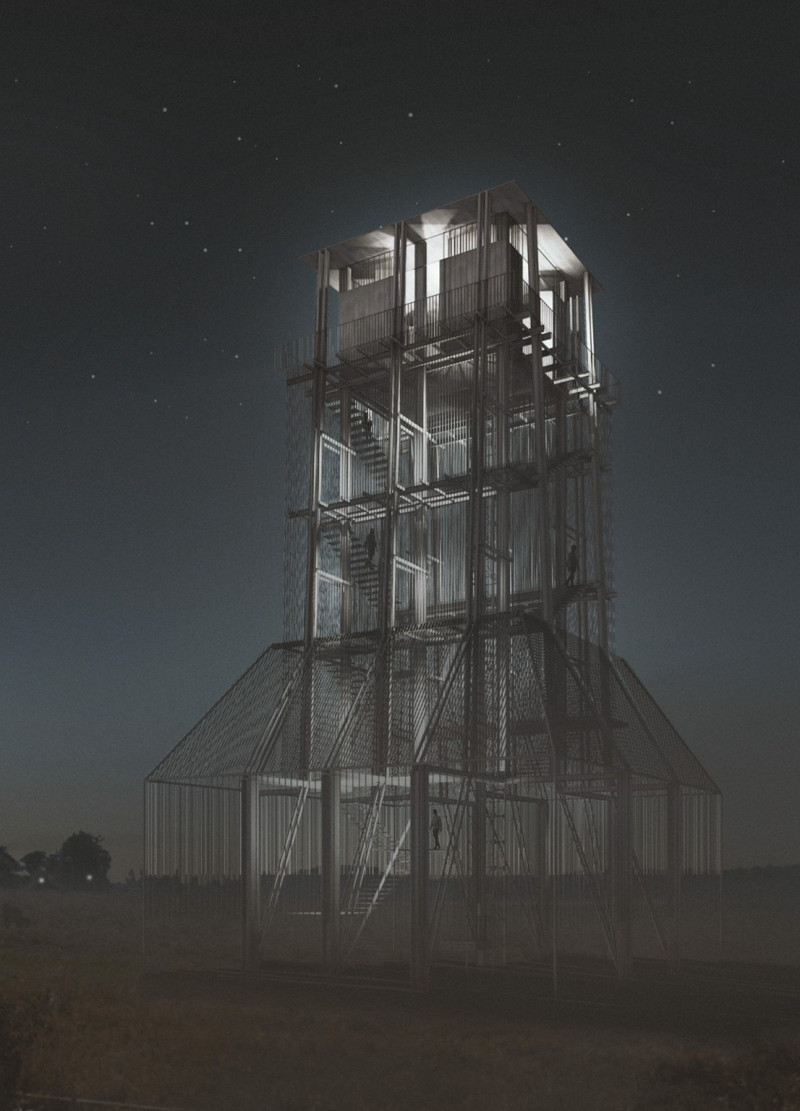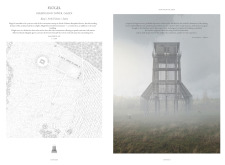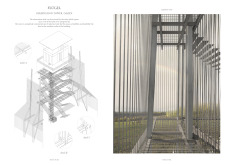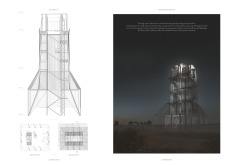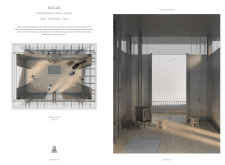5 key facts about this project
Innovative Design Approach
A key aspect of FLÜGEL's design is its all-metal construction, which contributes to both durability and aesthetic appeal. The use of steel frames ensures structural integrity while also allowing for large glass panels that offer unobstructed views of the biosphere reserve. This configuration promotes visual connectivity between the interior and exterior, enhancing the visitor experience. The strategic placement of observation levels allows for diverse vantage points, accommodating both individual reflection and shared experiences.
The tower features a simple yet effective layout, with a ground floor serving as an entrance and transition space. Stairways and a lift ensure accessibility to all levels, reinforcing the project’s inclusive approach. Each observation floor is equipped with glass enclosures that provide panoramic views, with the fifth level incorporating sliding shutters to adjust the level of privacy based on weather conditions.
Integration with Nature
FLÜGEL emphasizes a strong relationship with its natural surroundings. Its architectural form is designed to blend into the verdant landscape while becoming a focal point for visitors. The design encourages outdoor activities, such as hiking and horseback riding, facilitating a connection between people and the environment. The inclusion of warm wooden elements within the observation spaces contrasts with the colder metallic exterior, creating an inviting atmosphere.
The project stands out within the context of rural Latvian architecture, as it diverges from the conventional use of brick and thatched roofs. Instead, FLÜGEL’s architectural language reflects contemporary design principles, prioritizing functionality and ecological awareness. As an ecotourism hub, the observation tower serves not only as a viewing platform but also as an educational resource, promoting sustainability and environmental stewardship.
For further exploration of FLÜGEL Observation Tower, interested readers are encouraged to examine architectural plans, sections, and design ideas to gain detailed insights into its construction and functions.


